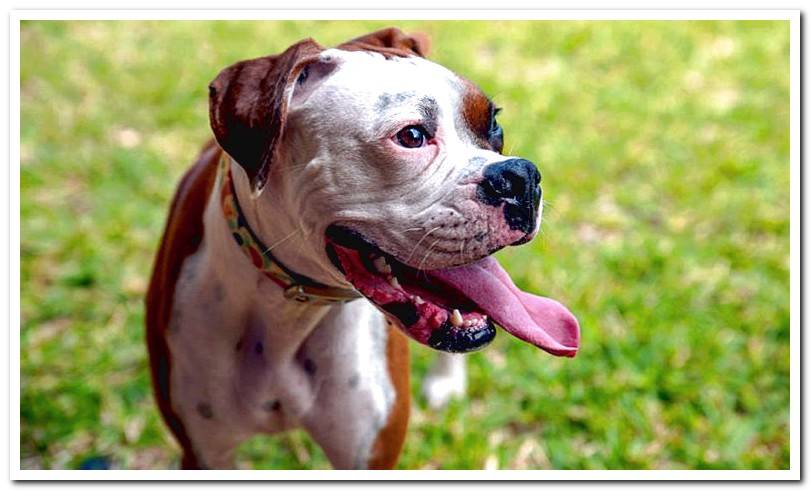
The dog’s normal breathing ranges from ten to thirty breaths per minute. A higher rate indicates abnormal, rapid, or rapid breathing. There are multiple situations that justify this change.
They include fever, pain, or anxiety. It is important that we differentiate this breathing from panting. This is physiological and serves to reduce the dog’s body temperature, without it being a problem that should worry us. Let’s see in detail more information about our dog’s breathing.
Index of contents
- 1 Rapid breathing in dogs What does it mean?
- 2 Rapid breathing and breathing difficulties
- 2.1 Congestive heart failure
- 2.2 Lung disease
- 2.3 Shock
- 2.4 Heatstroke
- 2.5 Dehydration
- 2.6 Diabetic cetoacidosis
- 2.7 Poisoning
Rapid breathing in dogs What does it mean?
Fever is a common symptom of many diseases that has rapid breathing as a symptom. It is necessary that we go to the vet in order to obtain a diagnosis and start treatment. For its part, pain also occurs in a lot of processes. It is another trigger for rapid breathing.
If we ignore its origin or it is due to a fracture or any other serious injury, you should also go to the vet. By last, nervousness in certain situations can lead the dog to breathe abnormally fast.
In these cases, treatment will be more oriented towards modifying that behavior. A veterinaryn specialized in canine behavior, an educator or an ethologist will be the reference professionals to establish appropriate guidelines for action.
Rapid breathing and breathing difficulties
In addition to the above assumptions, rapid breathing is often associated with respiratory difficulties. This box may indicate that the dog is suffering from heart disease congestive or lung disease, of greater or lesser severity.
Shock, the dreaded heat stroke, dehydration, what is known as ketoacidosis that can affect diabetic dogs, or the intake of some toxins are among the causes of fast and fatigued breathing. All of them have in common the need to seek veterinary assistance.

Congestive heart failure
In this disorder the heart does not get adequate blood circulation to the entire body. This ends up compromising the functioning of all organs. The heart will make up for its deficiencies as long as possible. But there will come a time when we will appreciate symptoms.
Many times they appear after the dog makes some physical effort. Among these are, at the beginning of the disease, tiredness, decreased activity and coughing spells. When it progresses, the dog stops eating, it thins, the abdomen becomes inflamed and rapid breathing can be detected.
Edemas, acceleration of the pulse, mucous membranes also occur and the dog may fade. As soon as we detect symptoms of this insufficiency, we must go to the vet. Treatment includes diet and drugs appropriate to the symptoms shown.
Lung disease
Pneumonia and pleural effusion are the lung pathologies most often related to rapid breathing. In addition, we will detect signs such as fever, depression, fast pulse, runny nose, cough, bluish mucosa or collapse, in the most severe cases.
Pneumonia can be caused by viruses, bacteria, fungi, or parasites and affects more young, old or weakened dogs. You need veterinary treatment. On the other hand, in the pleural effusion there is an accumulation of serum or blood in the chest.
It is usually related to congestive heart failure, although there are other causes that cause it, such as kidney, liver or tumor problems. The spill seriously compromises breathing and is therefore a veterinary emergency.
Shock
The shock is due to insufficient blood supply and a lack of oxygen. Any cause that alters the functioning of the circulatory or respiratory system is liable to trigger shock.
Rapid breathing is accompanied by an increased heart rate. It occurs in an attempt by the body to make up for deficiencies. Logically, if the dog does not receive veterinary attention, it will perish. And, even receiving it, the forecast is reserved.
Shock occurs when bleeding, heart failure, allergic reactions, dehydration, poisoning, sepsis, or peritonitis. When the shock is very advanced the breathing becomes slow, the animal is cold, with pale mucous membranes, a weak pulse and can lose consciousness.
Heatstroke
Heat stroke involves a rise in body temperature to limits that can lead the dog to death. Therefore it is an emergency that requires rapid veterinary intervention. It is very common to happen when the dog is left inside a vehicle in the sun. But there are other risk factors like brachycephaly.
In addition to impaired breathing, the dog’s saliva thickens, the mucous membranes redden, and there is bloody diarrhea and shock. It is urgent to cool the dog by wetting it. But not so much that a hypotherm occurs, that is, the excessive drop in temperature.
Dehydration
Dehydration is the loss of more body fluids than is replenished. It is normal to happen after intense episodes of vomiting and diarrhea. It can also be associated with fever and many serious illnesses or processes such as heat stroke.
We can check the hydration status of our dog by taking a fold of its skin from the back between the fingers. We pull gently upwards. If the fur does not immediately return to its initial position, the dog is dehydrated.
Signs of dehydration are also dry mouth, sticky gums, thick saliva, sunken eyes, rapid breathing, and shock. It must be transferred immediately to the vet.
Diabetic cetoacidosis
Diabetic ketoacidosis is a condition associated with hyperglycemia. There is not enough insulin in the body to get so much glucose into the cells. Therefore, to obtain energy, fats begin to be metabolized.
Ketones are the result of this process. In addition to altering breathing, there is general weakness, vomiting, and an odor of acetone, such as nail polish remover, on the breath. It is a veterinary emergency.
Poisoning
There is a huge list of potentially toxic substances. The severity of the poisoning will depend on the type of contact with the substance, its quantity, the size of the dog or the earliness with which the treatment is started.. Veterinary assistance is usually essential. Some toxic products include rapid breathing among their symptoms.
They are components of rodenticides, pyrethrins that are used in insecticides, chocolate, petroleum derivatives such as gasoline or turpentine or so
me plants such as calla lily or potos. Insect bites can also result in rapid breathing.
